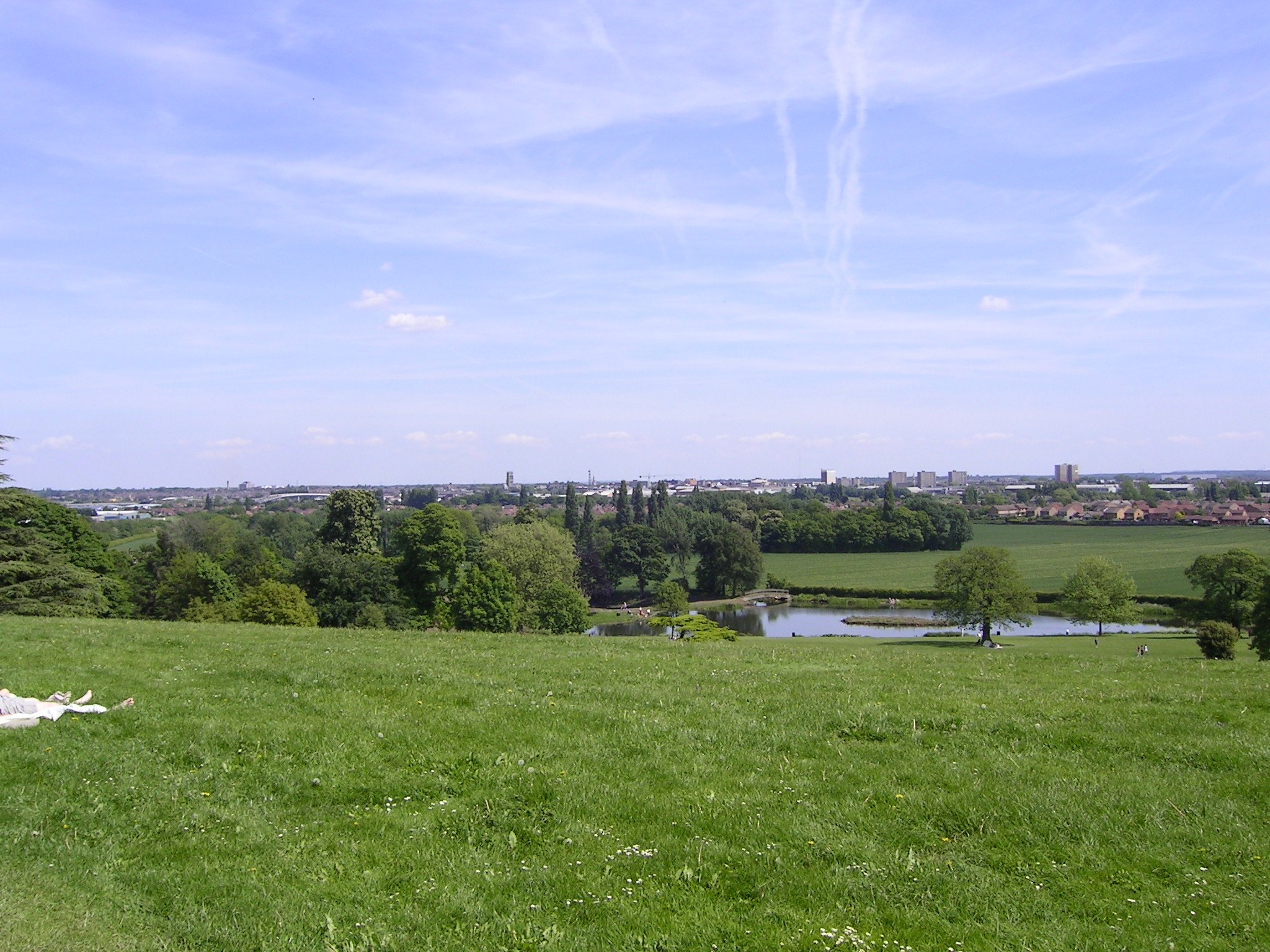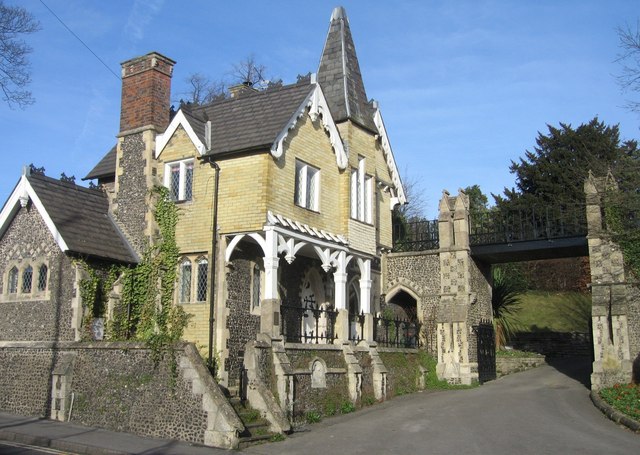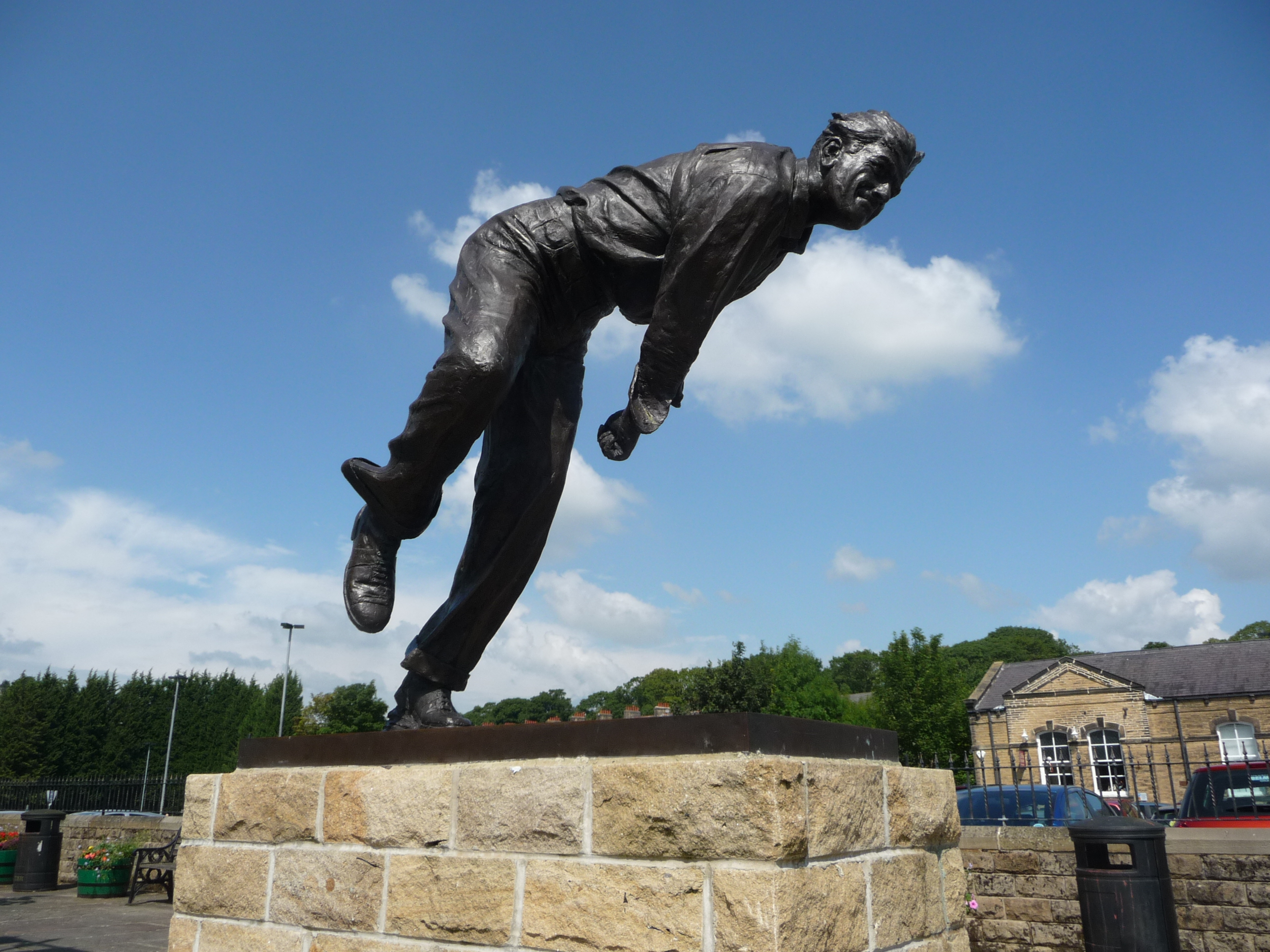|
Stainton, South Yorkshire
Stainton is a village and civil parish in the Metropolitan Borough of Doncaster in South Yorkshire, England. The parish has a population of 269, increasing marginally to 271 at the 2011 Census. and is historically part of the West Riding of Yorkshire. Stainton is recorded in the 1086 ''Domesday Book''. Stainton grew in the 19th century, providing homes for miners at Maltby. Stainton ecclesiastical parish is within the Diocese of Sheffield. The parish church of St. Winifred, a Grade II* listed building, dates from the 12th century. The current Stainton lord of the manor (as of 2015), is the 13th Earl of Scarbrough. The cricketer Freddie Trueman was born at Scotch Springs in Stainton. Arlott, John"Fred Trueman" ''The Guardian'', 3 July 2006. Retrieved 31 March 2015 See also * Listed buildings in Stainton, South Yorkshire References External links *"The Ancient Parish of Stainton" ''Genuki GENUKI is a genealogy web portal, run as a charitable trust. It "provi ... [...More Info...] [...Related Items...] OR: [Wikipedia] [Google] [Baidu] |
Metropolitan Borough Of Doncaster
The City of Doncaster is a metropolitan borough with city status in South Yorkshire, England. It is named after its principal settlement, Doncaster, and includes the surrounding suburbs of Doncaster as well as numerous towns and villages. The district has large amounts of countryside. At 219 sq miles, it is the largest metropolitan borough by area in England. The largest settlement in the borough are Doncaster itself, followed by the towns of Thorne, Hatfield and Mexborough (the latter of which is part of the Barnsley/Dearne Valley built-up area), and it additionally covers the towns of Conisbrough, Stainforth, Bawtry, Askern, Edlington and Tickhill. Doncaster borders the Selby district of North Yorkshire to the north, the East Riding of Yorkshire to the north-east, North Lincolnshire to the east, Bassetlaw in Nottinghamshire to the south-east, Rotherham to the south-west, Barnsley to the west, and Wakefield, West Yorkshire, to the north-west. It is part of th ... [...More Info...] [...Related Items...] OR: [Wikipedia] [Google] [Baidu] |
Church Of England Parish Church
A parish church in the Church of England is the church which acts as the religious centre for the people within each Church of England parish (the smallest and most basic Church of England administrative unit; since the 19th century sometimes called the ecclesiastical parish, to avoid confusion with the civil parish which many towns and villages have). Parishes in England In England, there are parish churches for both the Church of England and the Roman Catholic Church. References to a "parish church", without mention of a denomination, will, however, usually be to those of the Church of England due to its status as the Established Church. This is generally true also for Wales, although the Church in Wales is dis-established. The Church of England is made up of parishes, each one forming part of a diocese. Almost every part of England is within both a parish and a diocese (there are very few non-parochial areas and some parishes not in dioceses). These ecclesiastical parishes ... [...More Info...] [...Related Items...] OR: [Wikipedia] [Google] [Baidu] |
Genuki
GENUKI is a genealogy web portal, run as a charitable trust. It "provides a virtual reference library of genealogical information of particular relevance to the UK and Ireland". It gives access to a large collection of information, with the emphasis on primary sources, or means to access them, rather than on existing genealogical research. Name The name derives from "GENealogy of the UK and Ireland", although its coverage is wider than this. From the GENUKI website: Structure The website has a well defined structure at four levels. * The first level is information that is common to all "the United Kingdom and Ireland". * The next level has information for each of England (see example) Ireland, Scotland, Wales, the Channel Islands and the Isle of Man. * The third level has information on each pre-1974 county of England and Wales, each of the pre-1975 counties of Scotland, each of the 32 counties of Ireland and each island of the Channel Islands (e.g. Cheshire, County Kerry an ... [...More Info...] [...Related Items...] OR: [Wikipedia] [Google] [Baidu] |
Listed Buildings In Stainton, South Yorkshire
Stainton is a civil parish in the metropolitan borough of Doncaster, South Yorkshire, England. The parish contains 14 listed buildings that are recorded in the National Heritage List for England The National Heritage List for England (NHLE) is England's official database of protected heritage assets. It includes details of all English listed buildings, scheduled monuments, register of historic parks and gardens, protected shipwrecks, a .... Of these, one is listed at Grade II*, the middle of the three grades, and the others are at Grade II, the lowest grade. The parish contains the village of Stainton and the surrounding countryside. Most of the listed buildings are houses and associated structures, farmhouses and farm buildings, and the others are a church, memorials in the churchyard, and a milestone. __NOTOC__ Key Buildings References Citations Sources * * * * * * * * * * * * * * * * {{DEFAULTSORT:Stainton, South Yorkshire Lists of listed bui ... [...More Info...] [...Related Items...] OR: [Wikipedia] [Google] [Baidu] |
The Guardian
''The Guardian'' is a British daily newspaper A newspaper is a periodical publication containing written information about current events and is often typed in black ink with a white or gray background. Newspapers can cover a wide variety of fields such as politics, business, sport .... It was founded in 1821 as ''The Manchester Guardian'', and changed its name in 1959. Along with its sister papers ''The Observer'' and ''The Guardian Weekly'', ''The Guardian'' is part of the Guardian Media Group, owned by the Scott Trust Limited, Scott Trust. The trust was created in 1936 to "secure the financial and editorial independence of ''The Guardian'' in perpetuity and to safeguard the journalistic freedom and liberal values of ''The Guardian'' free from commercial or political interference". The trust was converted into a limited company in 2008, with a constitution written so as to maintain for ''The Guardian'' the same protections as were built into the structure of the ... [...More Info...] [...Related Items...] OR: [Wikipedia] [Google] [Baidu] |
John Arlott
Leslie Thomas John Arlott, OBE (25 February 1914 – 14 December 1991) was an English journalist, author and cricket commentator for the BBC's '' Test Match Special''. He was also a poet and wine connoisseur. With his poetic phraseology, he became a cricket commentator noted for his "wonderful gift for evoking cricketing moments" by the BBC. Early life John Arlott was born in 1914 at Cemetery Lodge, Chapel Hill, Basingstoke in Hampshire, the son of cemetery registrar William John Arlott and Nellie (née Jenvey-Clarke). He attended Fairfields Primary School in Basingstoke before winning a scholarship to Queen Mary's Grammar School. Once at the school, however, he became embroiled in a feud with the headmaster, as the school "had not been wholly receptive to his young, independent, inquiring mind." Arlott eventually left the school of his own accord. He meanwhile showed an early interest in the local cricket matches; in 1926 he watched England and Australia play at The Oval, be ... [...More Info...] [...Related Items...] OR: [Wikipedia] [Google] [Baidu] |
Freddie Trueman
Frederick Sewards Trueman, (6 February 1931 – 1 July 2006) was an English cricketer who played for Yorkshire County Cricket Club and the England cricket team. He had professional status and later became an author and broadcaster. Acknowledged as one of the greatest bowlers in cricket's history, Trueman deployed a genuinely fast pace and was widely known as "Fiery Fred". He was the first bowler to take 300 wickets in a Test career. Together with Brian Statham, he opened the England bowling for many years and they formed one of the most famous bowling partnerships in Test cricket history. Trueman was an outstanding fielder, especially at leg slip, and a useful late order batsman who made three first-class centuries. He was awarded his Yorkshire county cap in 1951 and in 1952 was elected " Young Cricketer of the Year" by the Cricket Writers' Club. For his performances in the 1952 season, he was named one of the Wisden Cricketers of the Year in the 1953 edition of ''Wisden C ... [...More Info...] [...Related Items...] OR: [Wikipedia] [Google] [Baidu] |
Earl Of Scarborough
Earl of Scarbrough is a title in the Peerage of England. It was created in 1690 for Richard Lumley, 2nd Viscount Lumley. He is best remembered as one of the Immortal Seven who invited William of Orange to invade England and depose his father-in-law James II. Lumley had already been created Baron Lumley, of Lumley Castle in the County of Durham, in 1681, and Viscount Lumley, of Lumley Castle in the County of Durham, in 1689. These titles are also in the Peerage of England. The title of Viscount Lumley, of Waterford, was created in the Peerage of Ireland in 1628 for his grandfather Sir Richard Lumley, who later fought as a Royalist in the Civil War. Lord Scarbrough was succeeded by his eldest son, the second Earl. He represented East Grinstead and Arundel in the House of Commons and served as Lord Lieutenant of Northumberland. His younger brother, the third Earl, sat as Member of Parliament for Arundel and Lincolnshire. In 1723 he assumed by Royal licence the additional surnam ... [...More Info...] [...Related Items...] OR: [Wikipedia] [Google] [Baidu] |
Lord Of The Manor
Lord of the Manor is a title that, in Anglo-Saxon England, referred to the landholder of a rural estate. The lord enjoyed manorial rights (the rights to establish and occupy a residence, known as the manor house and demesne) as well as seignory, the right to grant or draw benefit from the estate. The title continues in modern England and Wales as a legally recognised form of property that can be held independently of its historical rights. It may belong entirely to one person or be a moiety shared with other people. A title similar to such a lordship is known in French as ''Sieur'' or , in German, (Kaleagasi) in Turkish, in Norwegian and Swedish, in Welsh, in Dutch, and or in Italian. Types Historically a lord of the manor could either be a tenant-in-chief if he held a capital manor directly from the Crown, or a mesne lord if he was the vassal of another lord. The origins of the lordship of manors arose in the Anglo-Saxon system of manorialism. Following ... [...More Info...] [...Related Items...] OR: [Wikipedia] [Google] [Baidu] |
Listed Building
In the United Kingdom, a listed building or listed structure is one that has been placed on one of the four statutory lists maintained by Historic England in England, Historic Environment Scotland in Scotland, in Wales, and the Northern Ireland Environment Agency in Northern Ireland. The term has also been used in the Republic of Ireland, where buildings are protected under the Planning and Development Act 2000. The statutory term in Ireland is "protected structure". A listed building may not be demolished, extended, or altered without special permission from the local planning authority, which typically consults the relevant central government agency, particularly for significant alterations to the more notable listed buildings. In England and Wales, a national amenity society must be notified of any work to a listed building which involves any element of demolition. Exemption from secular listed building control is provided for some buildings in current use for worsh ... [...More Info...] [...Related Items...] OR: [Wikipedia] [Google] [Baidu] |
Church Of England
The Church of England (C of E) is the established Christian church in England and the mother church of the international Anglican Communion. It traces its history to the Christian church recorded as existing in the Roman province of Britain by the 3rd century and to the 6th-century Gregorian mission to Kent led by Augustine of Canterbury. The English church renounced papal authority in 1534 when Henry VIII of England, Henry VIII failed to secure a papal annulment of his marriage to Catherine of Aragon. The English Reformation accelerated under Edward VI of England, Edward VI's regents, before a brief Second Statute of Repeal, restoration of papal authority under Mary I of England, Queen Mary I and Philip II of Spain, King Philip. The Act of Supremacy 1558 renewed the breach, and the Elizabethan Settlement charted a course enabling the English church to describe itself as both English Reformation, Reformed and Catholicity, Catholic. In the earlier phase of the Eng ... [...More Info...] [...Related Items...] OR: [Wikipedia] [Google] [Baidu] |
South Yorkshire
South Yorkshire is a ceremonial and metropolitan county in the Yorkshire and Humber Region of England. The county has four council areas which are the cities of Doncaster and Sheffield as well as the boroughs of Barnsley and Rotherham. In Northern England, it is on the east side of the Pennines. Part of the Peak District national park is in the county. The River Don flows through most of the county, which is landlocked. The county had a population of 1.34 million in 2011. Sheffield largest urban centre in the county, it is the south west of the county. The built-up area around Sheffield and Rotherham, with over half the county's population living within it, is the tenth most populous in the United Kingdom. The majority of the county was formerly governed as part of the county of Yorkshire, the former county remains as a cultural region. The county was created on 1 April 1974, under the Local Government Act 1972. It was created from 32 local government districts o ... [...More Info...] [...Related Items...] OR: [Wikipedia] [Google] [Baidu] |









